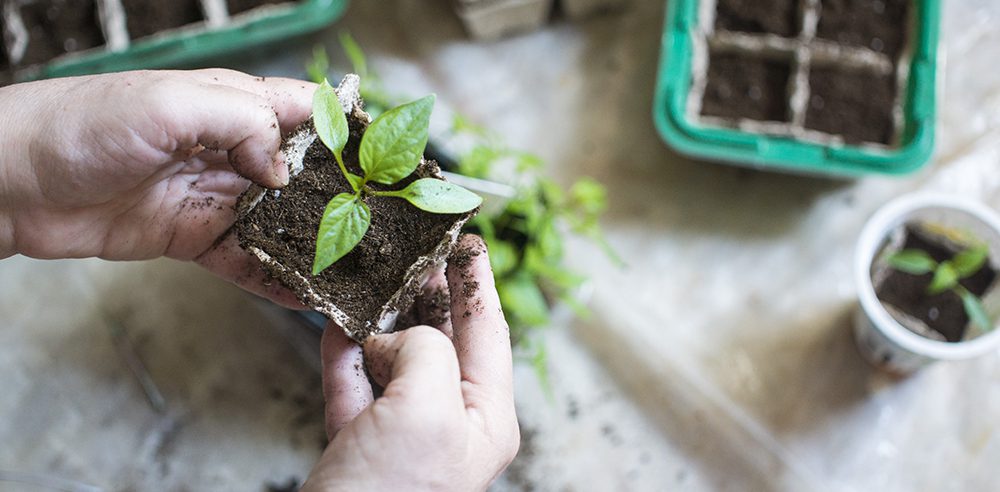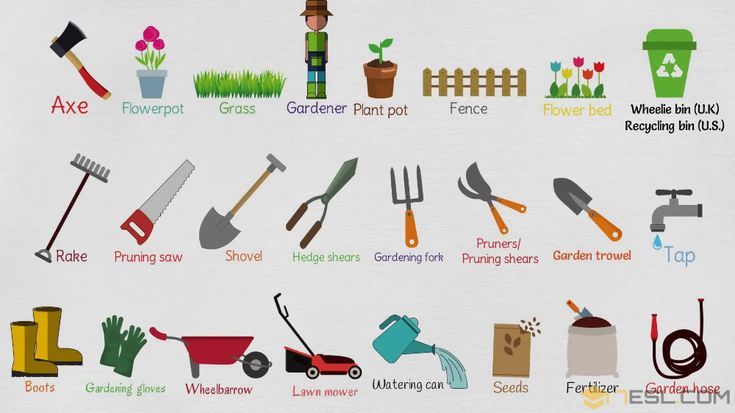blog
The Ultimate Checklist for Your Gardening Toolkit
Gardening is one of the most rewarding hobbies that allows you to connect with nature, beautify your surroundings, and even grow your own food. However, to make the most of your gardening experience, having the right tools is essential. A well-stocked gardening toolkit not only makes the job easier but also ensures that you can tackle any task, whether it’s planting flowers, pruning shrubs, or harvesting vegetables.
This comprehensive checklist will guide you through the essential tools every gardener needs to build the perfect toolkit, from beginner to advanced gardeners. By the end of this article, you’ll be fully equipped to start gardening with confidence, knowing you have everything you need to handle any gardening challenge that comes your way.
Why Is a Gardening Toolkit Important?
A gardening toolkit is important for several reasons:
- Efficiency: With the right tools, gardening tasks become quicker and easier, which means more time spent enjoying your garden.
- Quality of Work: Proper tools lead to better results. For example, sharp pruning shears provide clean cuts that promote healthy plant growth.
- Safety: Using the right tool for the job can reduce the risk of injury. Having ergonomic handles and safety features can make all the difference.
- Convenience: A well-organized toolkit makes it easier to find what you need when you need it, preventing frustration and wasted time.
1. Essential Hand Tools
Hand tools are the foundation of any gardening toolkit. These basic tools are crucial for everyday gardening tasks and are versatile enough to be used in a wide range of gardening projects.
a. Trowel
A trowel is one of the most essential hand tools for any gardener. It’s perfect for digging small holes, planting seedlings, transferring plants, and even mixing soil.
- Features to Look For: Choose a trowel with a strong, rust-resistant blade and a comfortable, ergonomic handle. A pointed tip makes it easier to dig into the soil.
b. Hand Fork
A hand fork is ideal for loosening soil, aerating the ground, and removing weeds. It’s especially useful when you need to break up compacted soil in flower beds or around your plants.
- Features to Look For: Look for a hand fork with sturdy, stainless steel prongs and a handle that offers a firm grip. A fork with a narrow head can easily reach tight spaces.
c. Weeder
Weeding is an inevitable part of gardening, and a weeder helps you remove weeds efficiently without damaging the surrounding plants. There are various types of weeders, including stand-up weeding tools and hand weeders.
- Features to Look For: Opt for a weeder with a sharp, pointed blade that can easily get under the roots of weeds to remove them completely.
d. Pruning Shears
Pruning shears, or secateurs, are essential for trimming plants, cutting back perennials, and maintaining the overall health of your garden. A sharp pair of shears can make the difference between a clean, precise cut and a jagged wound that can invite disease.
- Features to Look For: Choose a pair of pruning shears with sharp, high-quality blades and a spring-loaded mechanism. Look for ergonomic handles that reduce hand strain.
2. Tools for Digging and Cultivating
Digging and cultivating are fundamental tasks in gardening, whether you’re preparing the soil for planting or aerating the ground for better root growth. These tools help you manage the soil and create the perfect environment for your plants to thrive.
a. Shovel
A shovel is a must-have tool for digging, planting, and transplanting. Whether you’re digging a hole for a new tree or turning soil in your vegetable garden, a shovel will make the task much easier.
- Features to Look For: Look for a shovel with a strong, durable blade and a comfortable handle. A pointed blade works well for breaking through tough soil, while a round point is ideal for digging.
b. Spade
A spade is a versatile tool that helps with digging, edging, and moving soil. It has a flat blade that allows for precise cutting and is perfect for shaping garden beds or removing stubborn roots.
- Features to Look For: A spade with a sharp, flat blade and a long handle will allow you to work with more force and precision.
c. Garden Fork
A garden fork, also known as a digging fork, is great for breaking up compacted soil, aerating the ground, and lifting heavy materials like compost or mulch. It can also be used to loosen tough soil and remove stubborn weeds.
- Features to Look For: Choose a garden fork with strong, sturdy tines made from stainless steel to ensure longevity.
d. Hoe
A hoe is an essential tool for weeding, cultivating, and aerating the soil. It’s perfect for clearing out weeds in vegetable gardens or flower beds and preparing soil for planting.
- Features to Look For: Look for a hoe with a sharp, angled blade that can easily chop through soil and weeds.
3. Tools for Pruning and Trimming
Proper pruning and trimming help maintain the health and appearance of your plants. The following tools are designed to help you keep your garden neat, tidy, and flourishing.
a. Loppers
Loppers are larger than pruning shears and are perfect for cutting through thick branches or stems that are too tough for regular shears. They are excellent for trimming trees, shrubs, and vines.
- Features to Look For: Choose loppers with long handles for added leverage and sharp, durable blades that can handle thicker branches.
b. Hedge Trimmer
Hedge trimmers are designed for trimming and shaping hedges and shrubs. They come in both manual and power options, with electric and battery-powered models being the most popular.
- Features to Look For: When selecting a hedge trimmer, opt for a model with adjustable blades, so you can control the cutting length. Lightweight models are easier to maneuver and reduce arm fatigue.
c. Tree Pruner
A tree pruner is used for cutting branches that are high up in trees or hard-to-reach places. They typically come with telescoping handles and a pruning saw or bypass blade at the end.
- Features to Look For: Choose a tree pruner with adjustable handles for easy reach and a sharp, durable blade that can handle thick branches.

4. Watering Equipment
Proper watering is essential for healthy plant growth, and having the right watering tools is crucial for maintaining your garden. These tools ensure that your plants receive the right amount of water without wasting it.
a. Watering Can
A watering can is essential for small-scale watering tasks, especially for containers, seedlings, and houseplants. It allows you to control the amount of water being poured and direct it precisely where it’s needed.
- Features to Look For: Choose a watering can with a long spout for better precision. A can with a capacity of around 1-2 gallons is perfect for daily watering tasks.
b. Garden Hose
A garden hose is a must-have for larger gardens, lawns, and flower beds. It allows you to water large areas quickly and efficiently.
- Features to Look For: Look for a hose that’s durable, kink-resistant, and comes with adjustable nozzle settings for different watering needs. A hose length of 50-100 feet is ideal for most garden sizes.
c. Sprinkler System
If you have a large garden or lawn, a sprinkler system can save you time and effort. Sprinklers provide even coverage and ensure that your plants receive a consistent amount of water.
- Features to Look For: Choose a sprinkler system that’s adjustable and covers the desired area. A sprinkler with a timer feature can help you automate the watering process.
5. Storage and Organization
A well-organized garden toolkit not only makes it easier to find the tools you need but also helps ensure that your tools last longer and remain in good condition.
a. Toolbox or Tool Bag
A sturdy toolbox or tool bag is essential for storing your hand tools, gloves, and other gardening accessories. It helps keep everything organized and protects your tools from damage.
- Features to Look For: Look for a toolbox or bag with multiple compartments to separate different tools. A durable, waterproof material is ideal for protecting your tools from the elements.
b. Tool Rack or Shed
If you have a lot of gardening tools, investing in a tool rack or garden shed can help you keep your tools organized and easily accessible. A shed is also ideal for storing larger equipment like mowers, tillers, and ladders.
- Features to Look For: Choose a shed that’s weather-resistant and offers ample space for both hand tools and larger equipment. A tool rack or wall organizer is perfect for hanging tools in a convenient and space-efficient manner.
6. Safety Gear
Gardening involves a lot of physical activity, and safety should always be a priority. The following safety gear helps protect you while you work in your garden.
a. Gloves
Protect your hands from blisters, cuts, and dirt with a good pair of gardening gloves. They are essential for handling thorny plants, digging, and pruning.
- Features to Look For: Choose gloves that are durable, comfortable, and fit well. Leather gloves are great for heavy-duty tasks, while lightweight gloves are perfect for light gardening.
b. Knee Pads
Knee pads protect your knees from strain and injury while kneeling in the garden. They provide cushioning and make it easier to work for longer periods.
- Features to Look For: Look for knee pads that are padded, adjustable, and comfortable to wear for extended periods.
c. Safety Glasses
When using power tools or cutting plants, safety glasses are essential to protect your eyes from debris, dust, and sharp branches.
- Features to Look For: Choose glasses that are impact-resistant and offer a comfortable, adjustable fit.

Conclusion
A well-equipped gardening toolkit is essential for every gardener, whether you’re a beginner or a seasoned pro. The right tools not only improve efficiency but also help you achieve better results and maintain a safer gardening environment. By following this ultimate checklist, you can ensure that you have everything you need to tackle any gardening project with confidence. From basic hand tools like trowels and pruners to more specialized equipment like hedge trimmers and sprinklers, this toolkit will help you cultivate a beautiful, thriving garden all year round.


